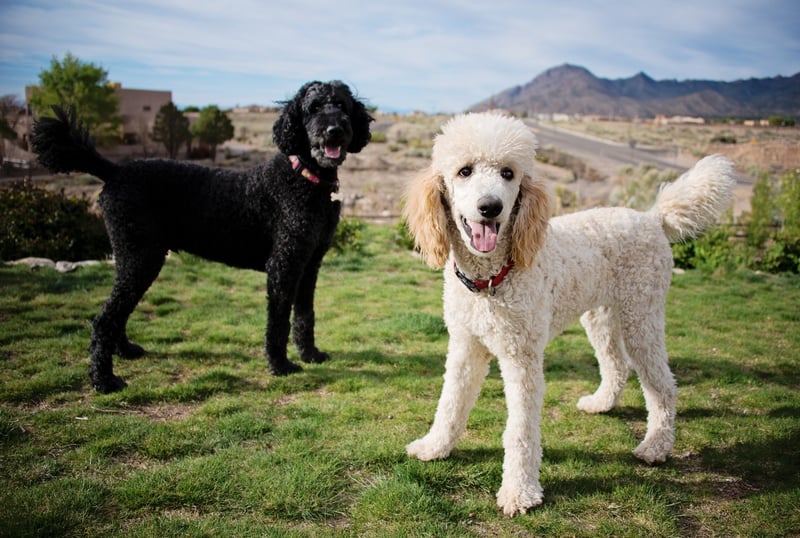
World Animal Protection Moves Advertisers To Eliminate Misguided Poodle Postcard
Blog
Borns Group removes dyed dogs from its advertising after learning of its toxic effects.
This month, we thank Borns Group for doing away with their postcard advertisement showcasing a pink-dyed poodle. After receiving the marketing material mailed directly to our office in New York City, we sent the company an email informing them of the dangers of dying dogs. Soon after, Borns Group notified us that although the image was photoshopped and no animals were dyed for the photo, they will remove the postcard and be more vigilant on what images they use for their advertisements.
Borns Group made the right move. The advertisement could have encouraged people to believe this is acceptable treatment of their pets. Dying dogs can be toxic to the animals. Especially when using human-grade dyes, these products contain harmful ingredients like ammonia and peroxide, substances that can cause allergic reactions, chemical burns, and skin disease. There is no safe way to dye a dog or any animal without there being a health risk.
Including unnatural images such as dyed dogs or even wild animals in unnatural settings can create harmful misconceptions about the animals. A 2011 study published in the journal PLoS One, for instance, found that people are more likely to falsely believe that chimps are not endangered after seeing them depicted in unnatural, human-like situations. Studies also suggest that such images are likely to fuel the mistaken belief that wild animals make good pets, when in fact wild animals are prohibited from being owned in many cities throughout the country and those that are legal suffer immensely from being in captivity.
World Animal Protection US works with companies to commit to not using wild animals in their advertisements. Last year, we moved Chase and Match.com to remove their advertisements featuring elephants being ridden or washed. These ads encourage the public to find human interaction with wild animals acceptable and even aspirational.
Thanks to technology, there are ways to use animals in advertisements that don’t promote cruelty. Through Computer-Generated Imagery and animatronics, the possibilities are endless. By looking at the alternatives and taking a stand for animals, we are working towards a world where animals are no longer exploited for entertainment.
If you would like more information on how to make your business and/or marketing materials animal-friendly, please contact Nicole Barrantes.
World Animal Protection US works with companies to commit to not using wild animals in their advertisements.
